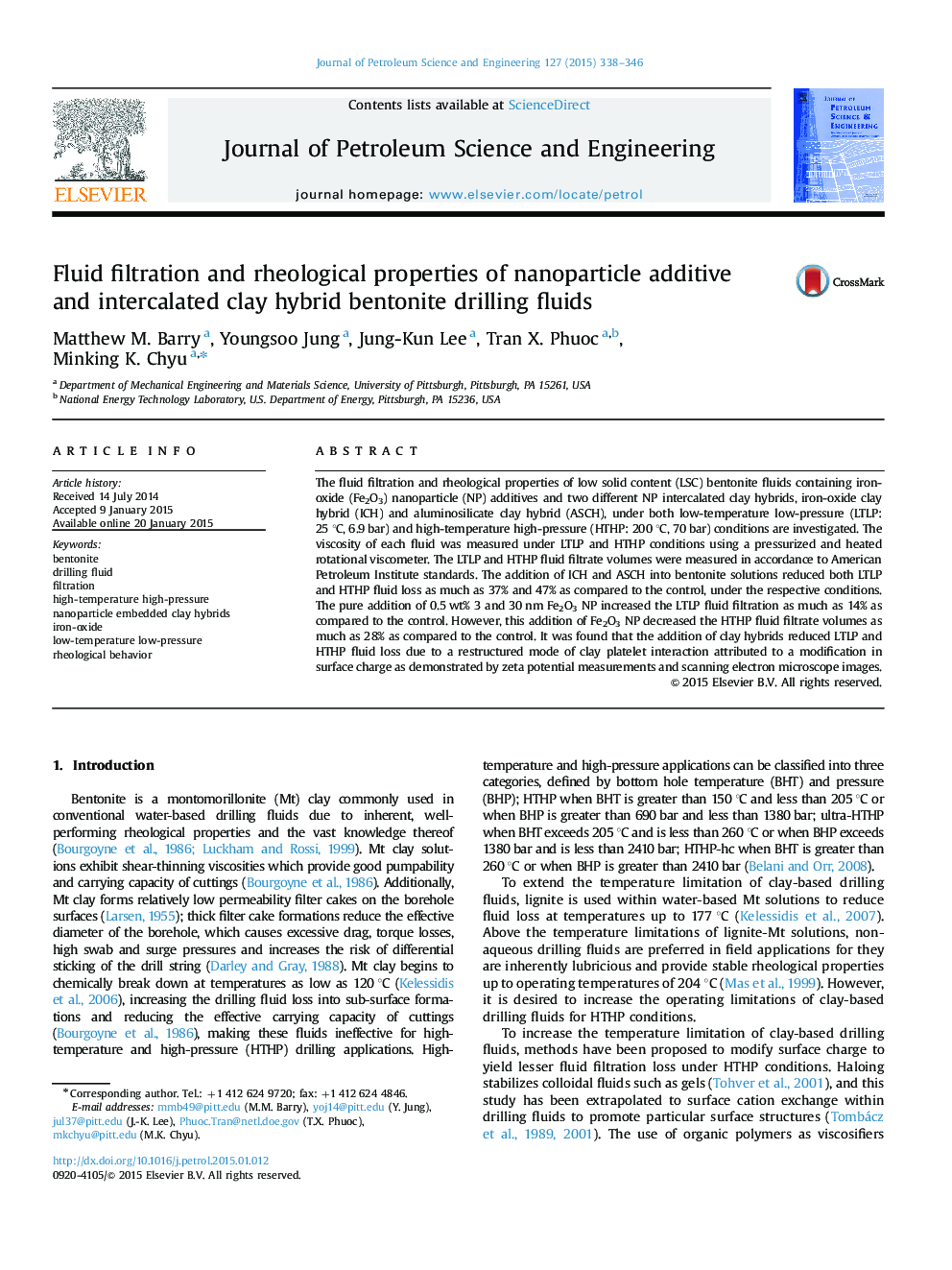| Article ID | Journal | Published Year | Pages | File Type |
|---|---|---|---|---|
| 1754880 | Journal of Petroleum Science and Engineering | 2015 | 9 Pages |
•Prepared 5.0 wt% bentonite solutions with Fe2O3 nanoparticles and clay hybrids.•Additive Fe2O3 solutions contained 0.5 wt% 3 and 30 nm nanoparticles.•Intercalated clay hybrids of 0.5 wt% iron-oxide (ICH) and aluminosilicate (ASCH).•Conditions of LTLP (25 °C, 6.9 bar) and HTHP (200 °C, 70 bar) were used.•ICH and ASCH reduced LTLP and HTHP fluid filtration by 37% and 47%, respectively.
The fluid filtration and rheological properties of low solid content (LSC) bentonite fluids containing iron-oxide (Fe2O3) nanoparticle (NP) additives and two different NP intercalated clay hybrids, iron-oxide clay hybrid (ICH) and aluminosilicate clay hybrid (ASCH), under both low-temperature low-pressure (LTLP: 25 °C, 6.9 bar) and high-temperature high-pressure (HTHP: 200 °C, 70 bar) conditions are investigated. The viscosity of each fluid was measured under LTLP and HTHP conditions using a pressurized and heated rotational viscometer. The LTLP and HTHP fluid filtrate volumes were measured in accordance to American Petroleum Institute standards. The addition of ICH and ASCH into bentonite solutions reduced both LTLP and HTHP fluid loss as much as 37% and 47% as compared to the control, under the respective conditions. The pure addition of 0.5 wt% 3 and 30 nm Fe2O3 NP increased the LTLP fluid filtration as much as 14% as compared to the control. However, this addition of Fe2O3 NP decreased the HTHP fluid filtrate volumes as much as 28% as compared to the control. It was found that the addition of clay hybrids reduced LTLP and HTHP fluid loss due to a restructured mode of clay platelet interaction attributed to a modification in surface charge as demonstrated by zeta potential measurements and scanning electron microscope images.
